Physical Address
304 North Cardinal St.
Dorchester Center, MA 02124
Physical Address
304 North Cardinal St.
Dorchester Center, MA 02124
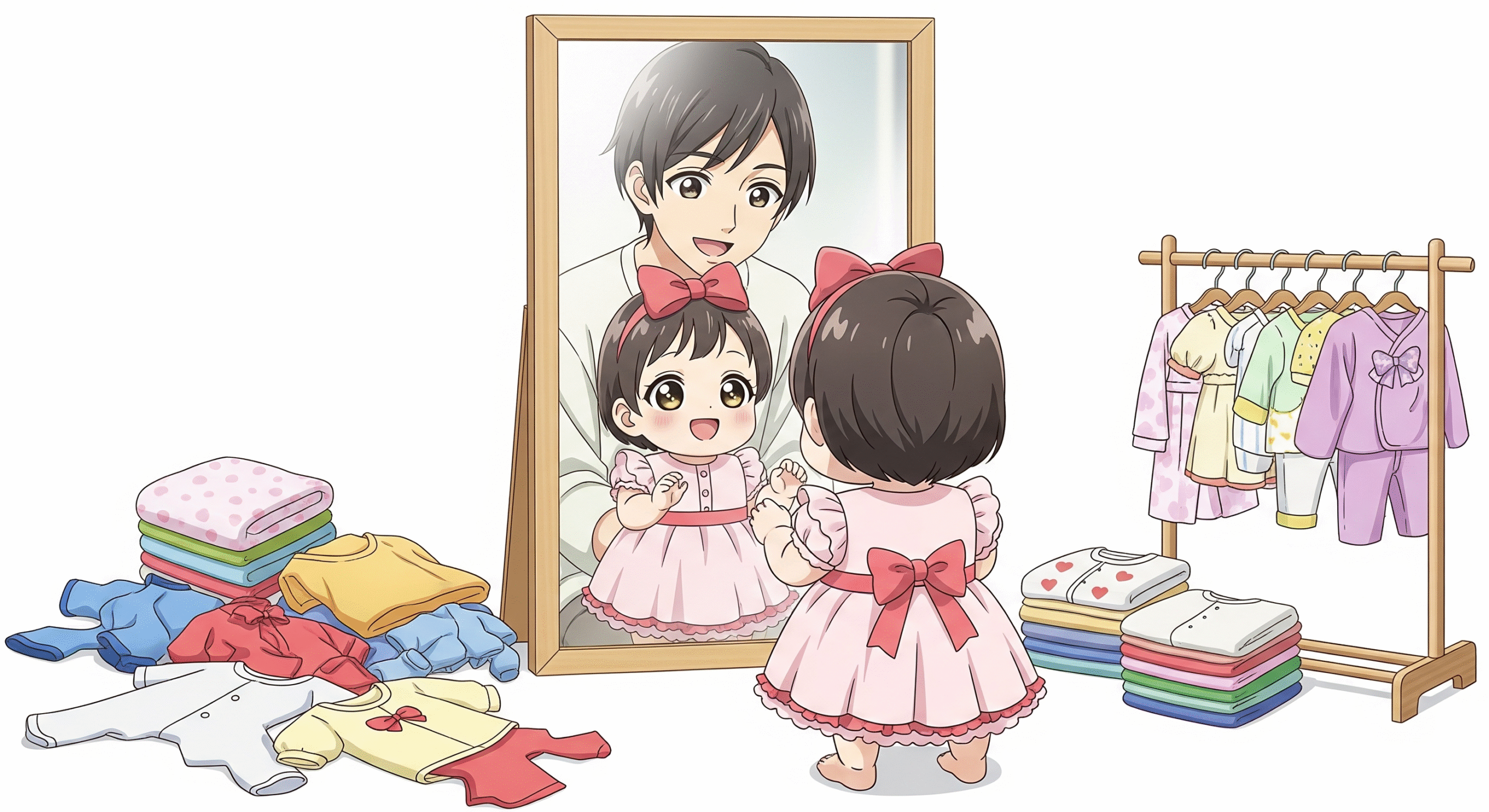
It’s late. The kids are finally, blessedly, asleep. You have a few precious moments to yourself, and you spend them doing what so many of us do… doom scrolling. As you browse, an ad pops up. It’s a pretty little flowery dress with see-through frills and a few tastefully placed sequins. It even features that animated character your daughter adores. You can already picture how gorgeous she’ll look in it, and you know she would be absolutely thrilled.
You click the ad. The website loads. With a one-click purchase, it’s yours. The credit card takes another hit, and in a few days, another tiny garment will arrive at your door.

Sound familiar? You’re not alone.
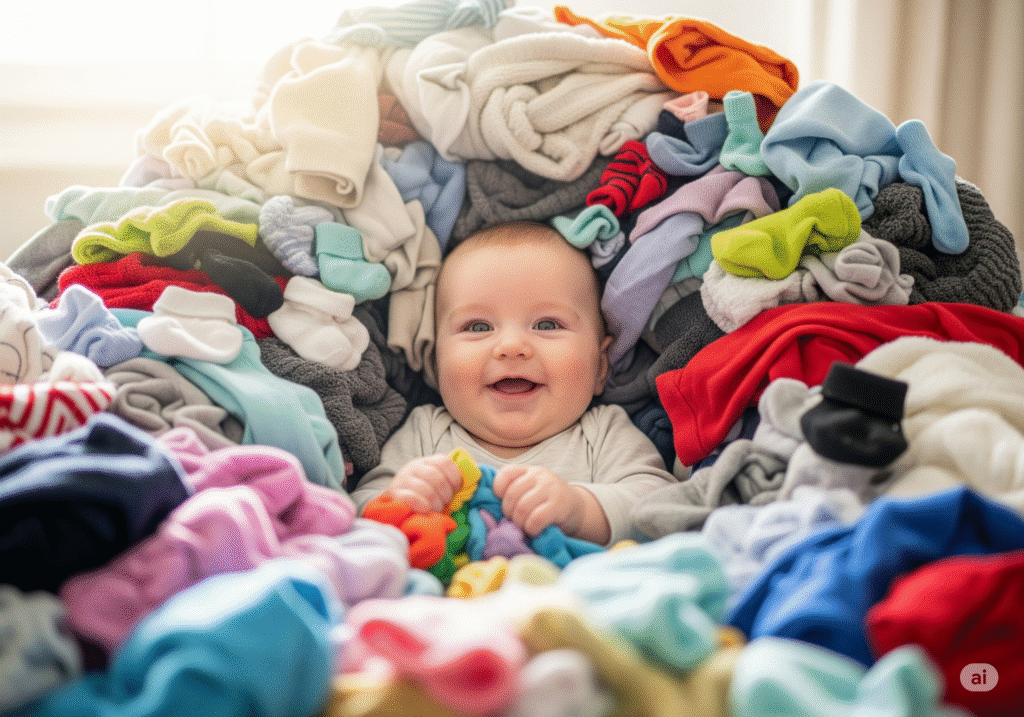
There’s no denying it, miniature-sized clothes on a small human is cuteness overload. For whatever reason, baby and kids’ clothes are simply irresistible. As parents, our children are always front of mind, and the tech algorithms know this. They know we are easy targets, and they feed us a constant stream of adorable outfits we never knew we “needed.”
But let’s pause for a minute. Your child is growing at an incredible rate, which means they outgrow clothes in the blink of an eye. You likely already have a mountain of outfits, some purchased, some gifted, many of which have only been worn a handful of times. You might even have bags of hand-me-downs from siblings, relatives, or friends.
So why do we keep buying? Because we want what’s best for our kids, and buying them something new feels like an act of love. It also gives our brain that little dopamine hit that comes with an impulse purchase. But if we’re being honest with ourselves, did we really need more clothes? The answer is almost always no.
I can say this with confidence because we’ve been through the cycle. With our first child, we were certified shopaholics. We saw nice-looking clothes, purchased. He might need this if the weather gets too cold, purchased. This special fabric is more breathable, purchased. We bought enough clothes to dress three kids, let alone one. The result was a mountain of clothing, with many items, and I mean a lot, never even worn. Some still had the tags on and in the original packaging. While digging through our shelf looking for something else, I “discovered” a storage box, that was labelled “Age 0-1”, our youngest daughter is 3… In there was a bunch of onesies, sleeping bag, baby wraps that we have conveniently forgotten about, probably over a hundred dollars of baby clothing. It was ridiculous.
With our second child, things were more sane. We had learned from our experience. We had hand-me-downs from her older brother that were still perfectly good. We had brand new items from the first time around that could finally be used. We were also gifted bags of second-hand clothes from friends whose own kids had outgrown them. We honestly had way more than she could use.
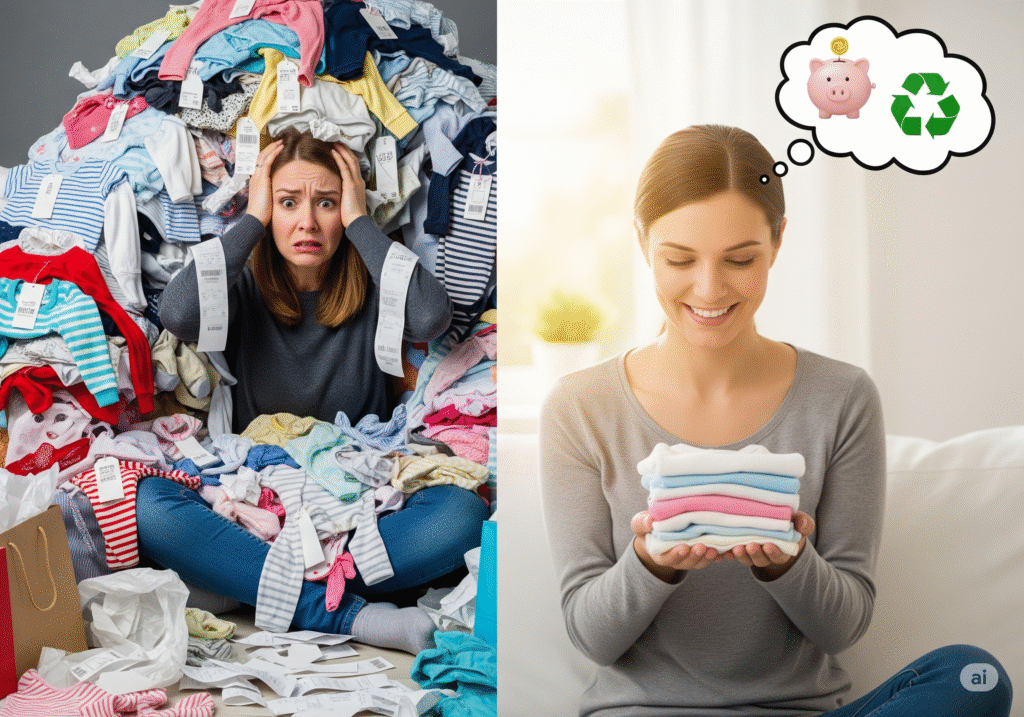
Did we still buy the odd dress or cute piece we fell in love with? Of course. But we didn’t go crazy. Our wallets, and the environment, thanked us for it.
In all honesty, your baby doesn’t care about the brand-new, pretty clothes. In those early months, their job is to sleep, eat, and poop. Those adorable outfits are more to satisfy our own desires and the feeling that we are providing the very best for our children.
And let’s not forget the reality of life with kids. That beautiful jumper you just bought can be soiled by an accident in seconds, leaving a permanent, ugly stain.
This habit also taps directly into the bigger problem of fast fashion. We live in an age where it’s easy to adopt a “disposable” mentality towards clothing. “It’s cheap,” we might think, “so it doesn’t matter if it only lasts a season.” But the environmental cost is significant. While baby clothes may be small, they still require fabric to be created, colours to be dyed, and pieces to be sewn together. For all those resources to be used for an item that is worn only a couple of times, or worse, left in a drawer with the tags still on, is extremely wasteful. It all adds up, contributing to the mountains of textile waste that are so damaging to our planet.
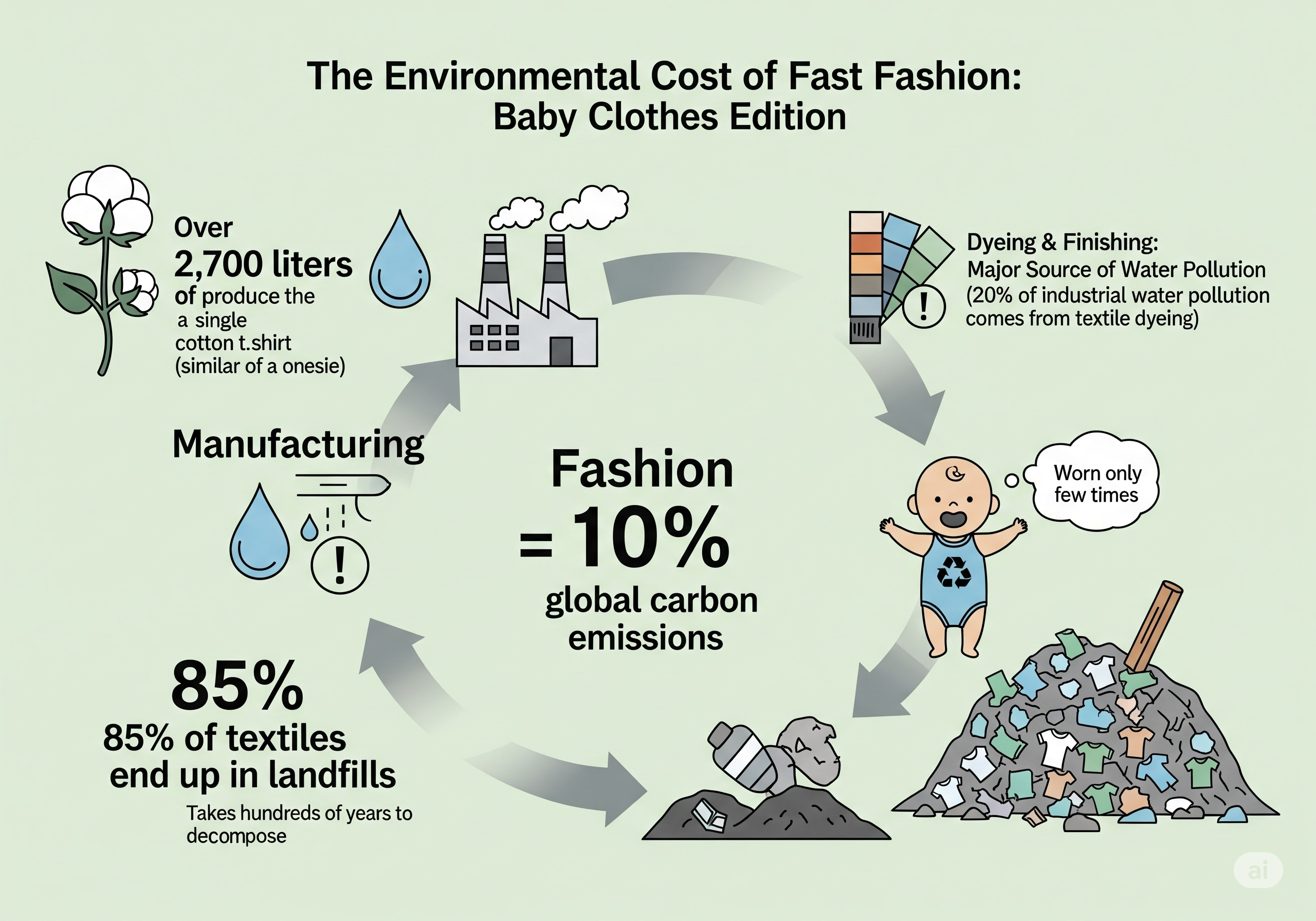
By all means, get that special outfit for a special occasion you want to capture in photos. But don’t feel pressured to go crazy buying new clothes for every day. So much of it ends up unused, under-utilised, or just plain wasted.
As parents who have gone through this phase and come out the other side, here are some hints and tips to help you manage the clothing mountain.
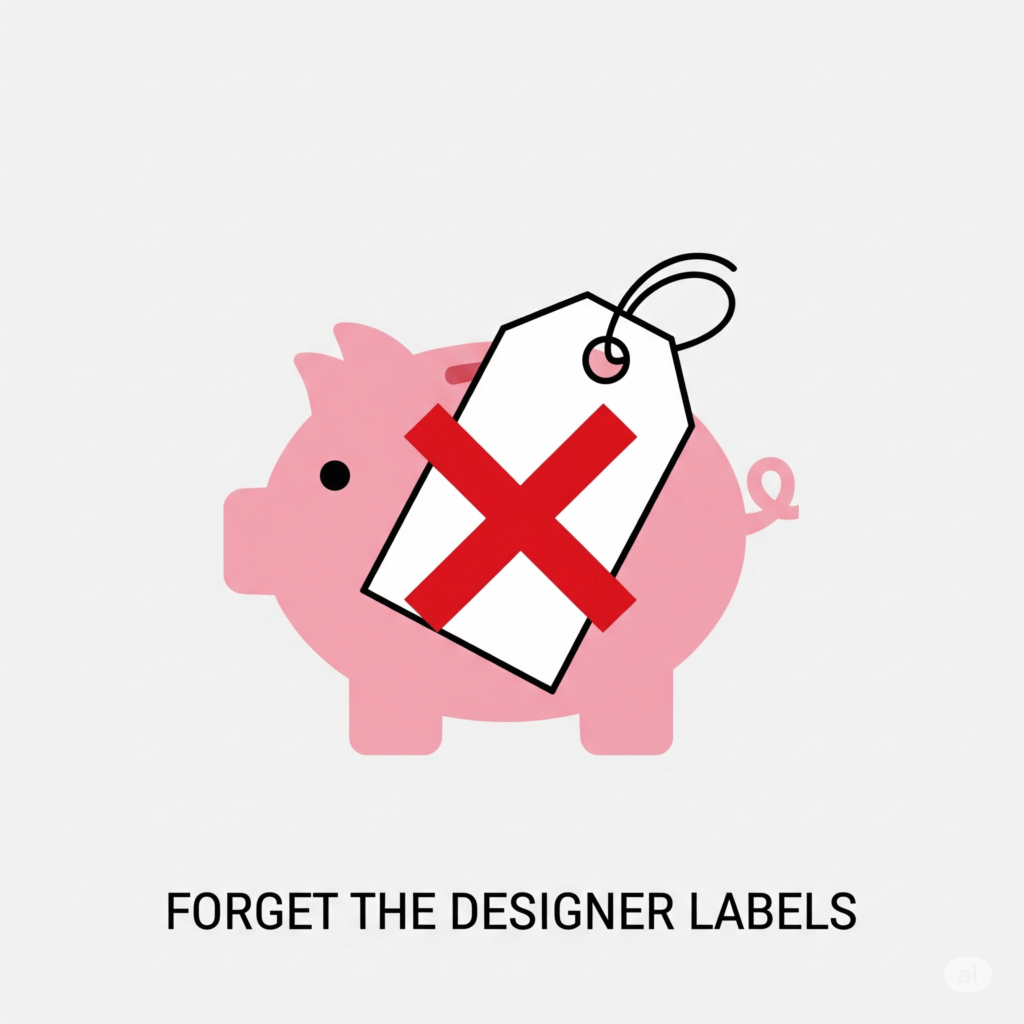
1. Forget the Designer Labels. Companies know parents are gullible when it comes to kids’ purchases. Slap a famous brand name on a tiny t-shirt, and suddenly it’s ten times the price. Don’t fall for it. Kids don’t need brand names, they aren’t going to be judged by other babies at the park, and there’s no peer pressure (for now anyway). They’ll likely grow out of it in a month anyway, so why bother?
But for those who want and can afford designer labels, by all means, go for it. But for the majority of parents who are working class battlers, designer labels are just a money trap!
2. Embrace Hand-Me-Downs and Second-Hand. If you have an older sibling, there will be plenty of clothes ready for another outing. Relatives and friends are another fantastic source. With kids growing so quickly, most clothes still have plenty of life in them. Reusing and recycling is an environmentally friendly option that also doesn’t hurt your pocket. Don’t forget to keep the cycle going and pass your clothes on when you’re done!
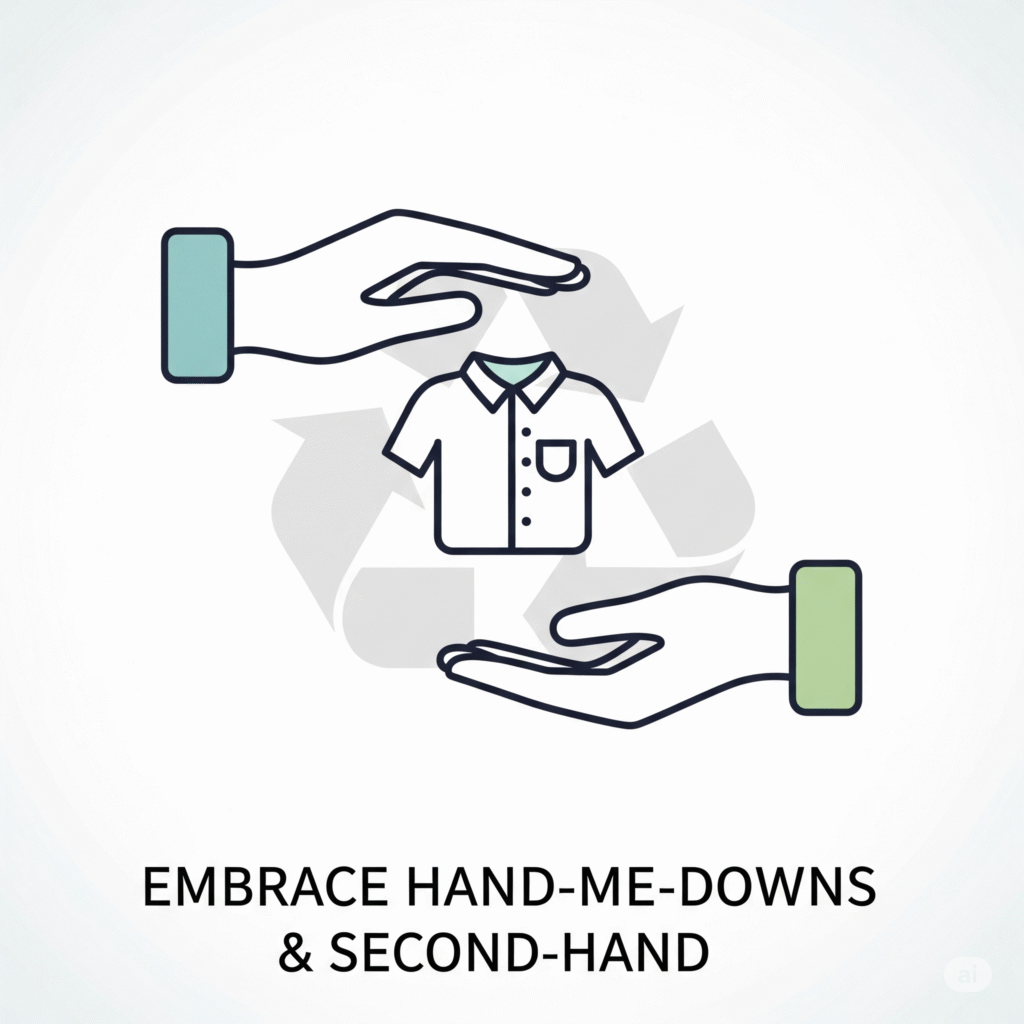
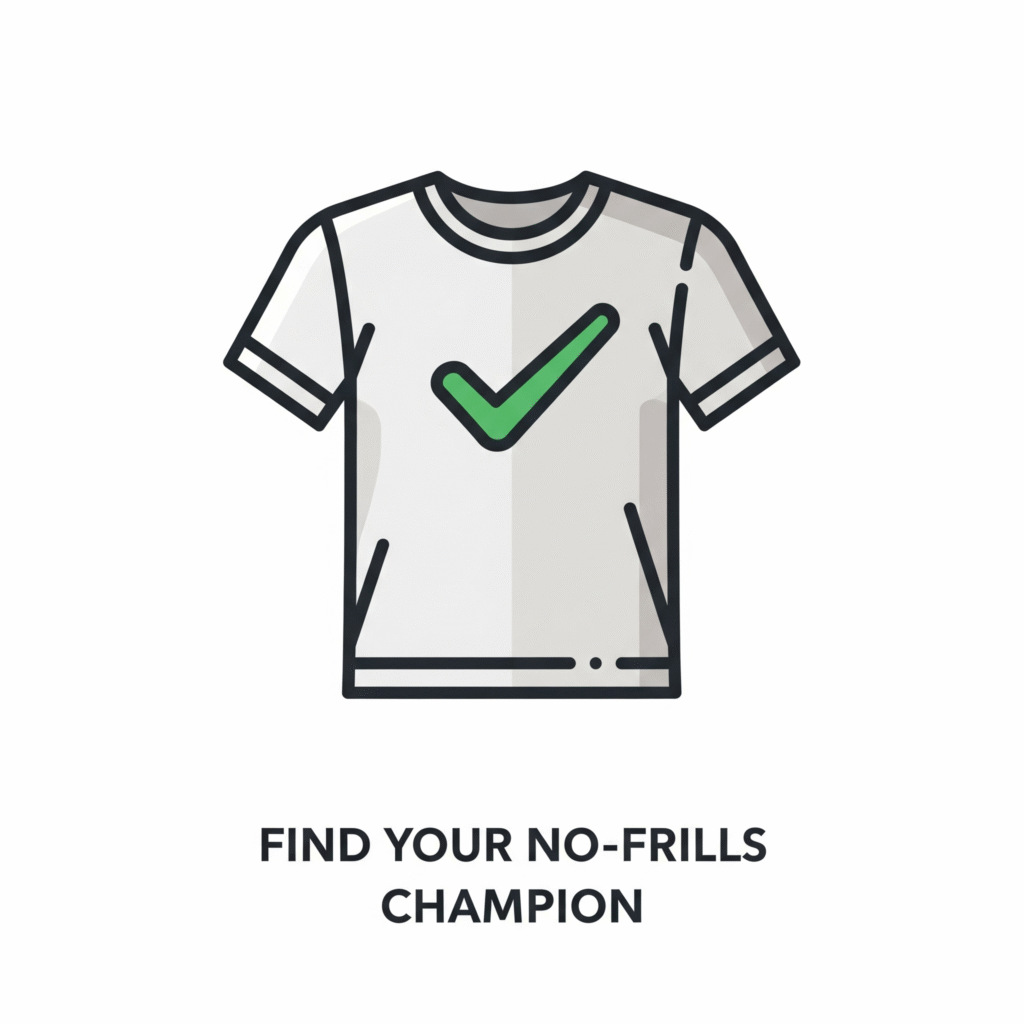
3. Find Your “No-Frills” Champion. Your child needs to be warm and protected. They are not trying to make the latest fashion statement (well, not yet anyway!). We’re based in Australia and have found Target to be great for good quality, reasonably priced clothing that doesn’t disintegrate after a few washes. Others swear by Kmart, which is even cheaper, though personally we find the quality questionable sometimes. Wherever you are, I’m sure there are department stores known for no-nonsense, durable basics. Find yours and stick with it.
4. Shop the Sales and Plan Ahead. Kids’ clothes go on clearance just like everything else, and you can score amazing deals. With the cost of living on everyone’s mind, making your money go that extra mile is key. This is where a little planning helps. Is winter ending? Look for clearance winter clothes in the next size up for next year. People pay a premium for convenience, so planning ahead is the first step to saving money.
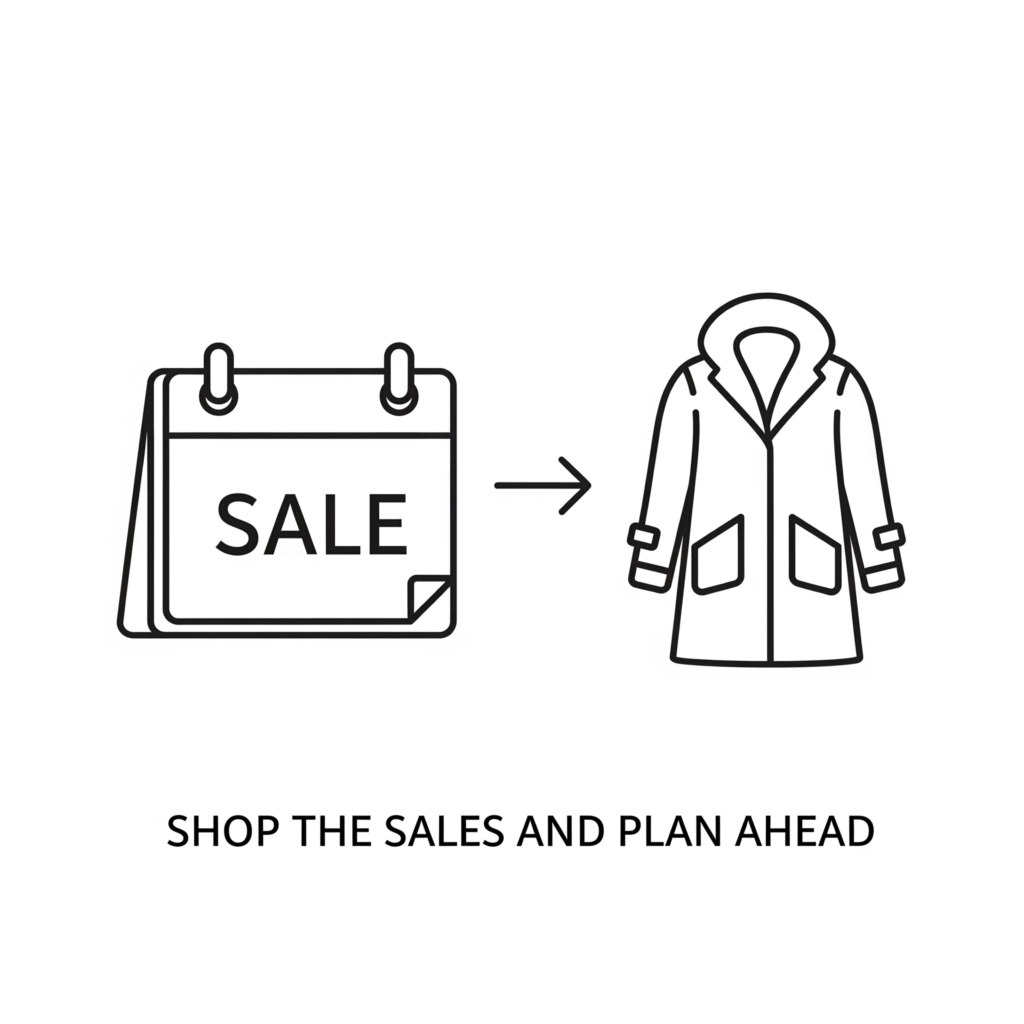

5. Pause and Ask: “Do We Really Need It?” I am extremely guilty of this. “Oh, that looks great, and it’s not that expensive, let’s get it!” But if I take a moment to think, does my daughter really need a fifth dress in a different shade of pink? Probably not. Before you click “buy,” just stop and think. If after thinking, you still want it for a good reason, like a party where that jumper would be perfect for photos, then absolutely get it! Living frugally doesn’t mean you can’t have things that make you happy, it just means spending with intention.
6. Do a Stocktake (You Might Be Surprised). With a million things going on, especially for the sleep deprived parents, it’s easy to forget what you already have (guilty here…). Put some time aside to go through your kids’ clothes. You’ll figure out what you have and what you actually need. Write it down in a list or a spreadsheet, no one is judging! You might even rediscover some cute outfits you bought and completely forgot about. I’ve certainly had that happen more than once. Even better, do this as an activity with your kid together. They will enjoy seeing the wide variety of clothes in different colours and patterns and no doubt have a blast. Just be careful they don’t grab stuff and throw it around, which my kids have been known to do… mostly just for laughs and giggles.
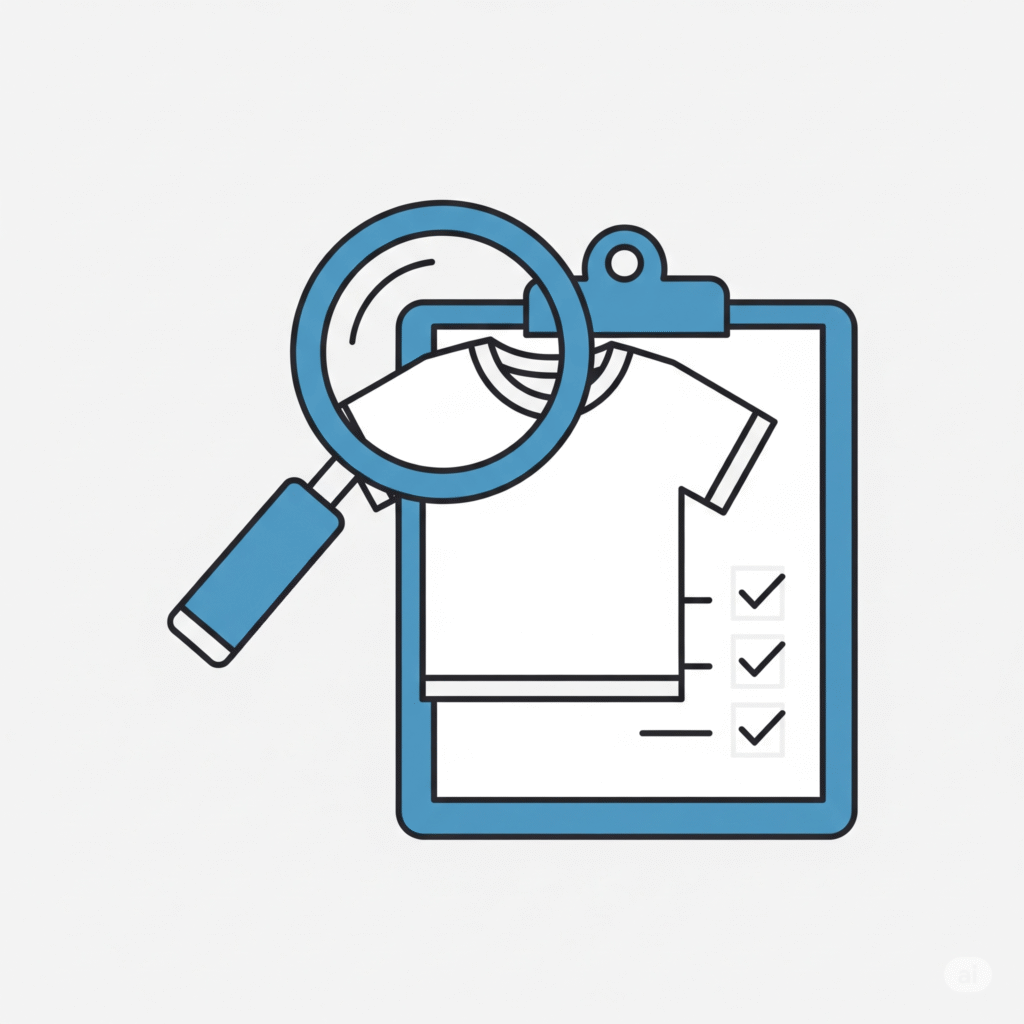
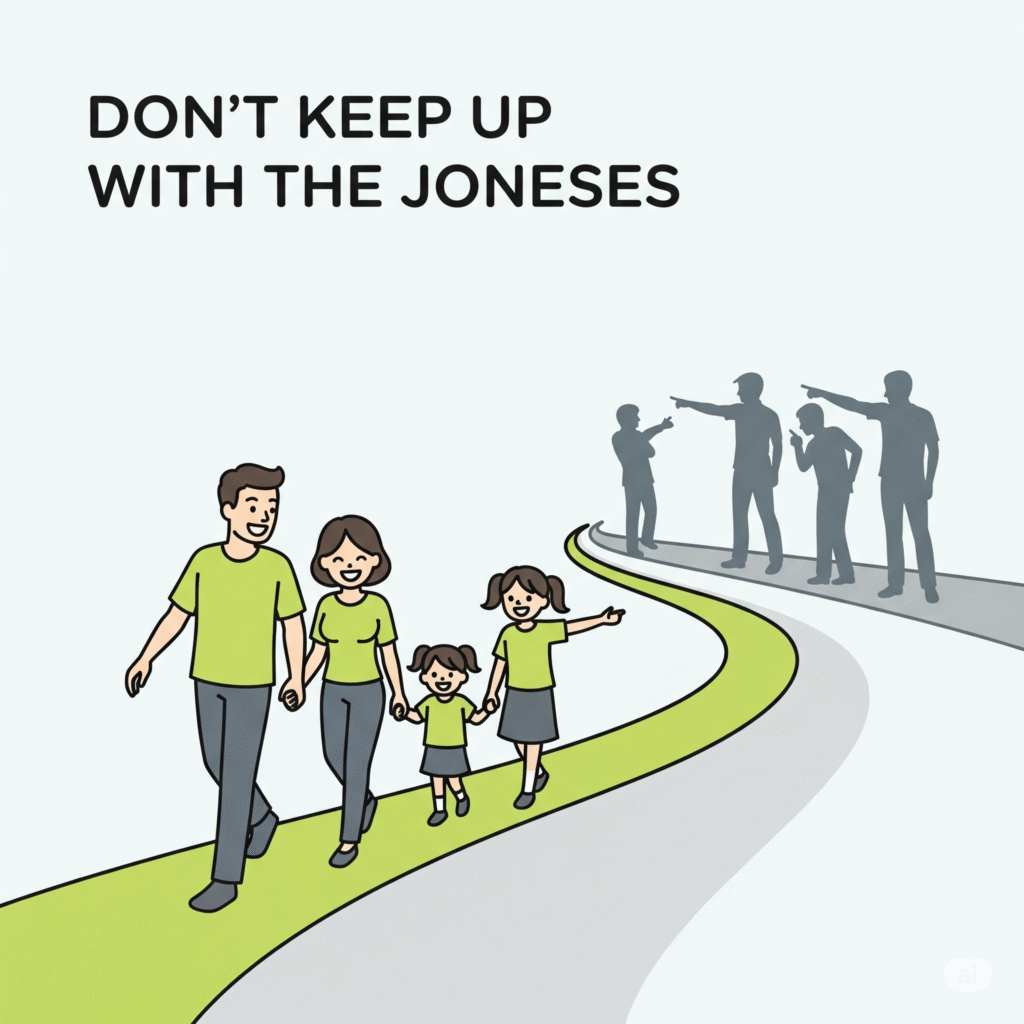
7. Don’t Keep Up with the Joneses. Every family has its own budget and needs. Who cares if another kid at childcare is decked out in brand names? If you can afford it and it makes you happy, great! If you can’t, so what? Buy what you want, or better yet, get every last mile out of those hand-me-downs. Honestly, you don’t need the stress of worrying about what other people think. If you and your kids are happy, that is the most important thing.
As a parent who has been through the clothing cycle twice now, I think the baby fashion industry is one of the biggest scams out there. I’ve seen baby clothes that cost more than my own. It’s crazy.
Most of these outfits will only be worn a handful of times before they’re outgrown. So before you buy, stop and think: do you really need it? Don’t waste your time, effort, and money building a wonderful wardrobe for your kids. They would probably prefer you spend that time and effort playing with them instead.
The final takeaway: reuse and recycle where possible. It’s simply a better way.
I know so many parents have closets full of baby or kids’ clothes with plenty of life left in them. Often, the easiest option seems to be throwing them away because finding them a new home can be a challenge.
I would love to put together an online community to help parents share these clothes with other upcoming families. I’m still thinking through the logistics of how it would work best, but I’m keen to invest some time to make it happen. If you think this is a good idea and might be interested, please reach out and let us know!
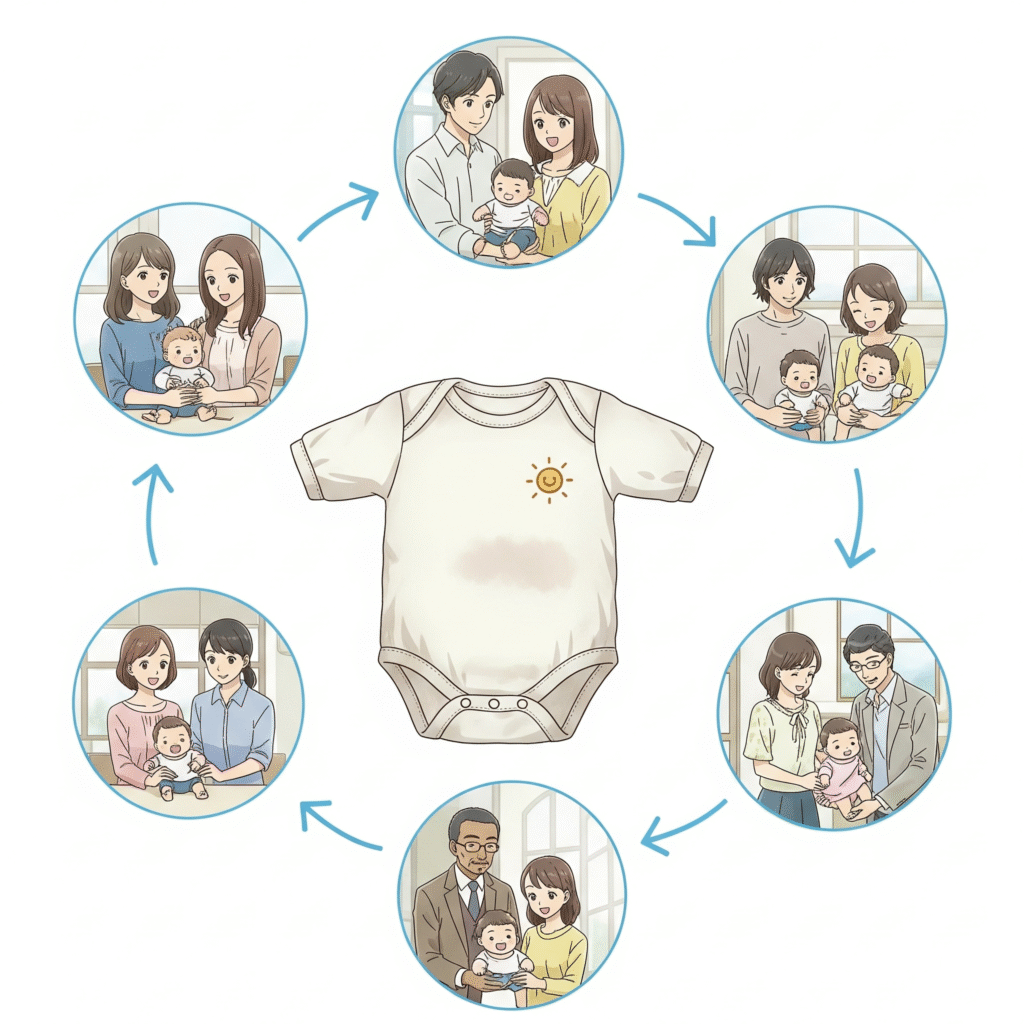
Do you have your own hints, tips, or horror stories about buying baby clothes? Feel free to leave a comment below. I’m always interested to hear what others think!